| HOME |
|---|
SCORPIUS
The Scorpion
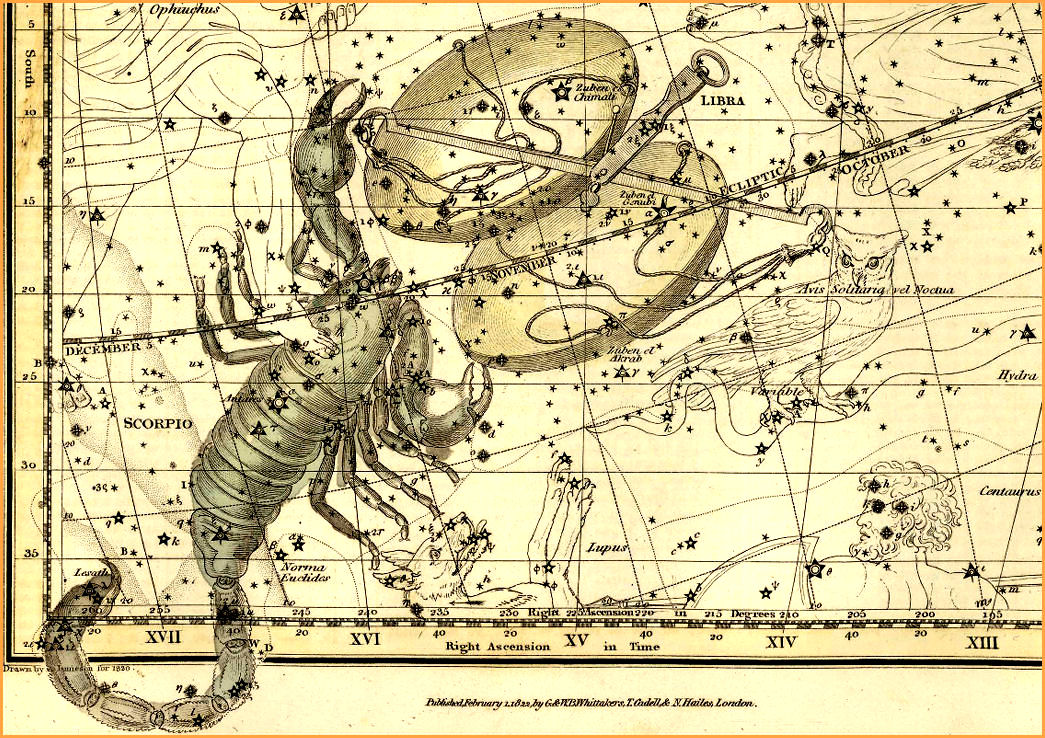
Scorpius - Celestial Atlas by Alexander Jamieson - 1822
| HOME |
|---|

One of the largest and most impressive constellations in the sky, Scorpius, really does conjure the image of a scorpion. and somehow manages to bring a sense of majesty and beauty to a form not normally associated with such things. The constellation has been recognized as a scorpion since the beginning of recorded history, and in ancient times it was even larger and more impressive, wielding a pair of massive claws in front of it as it crawled across the sky. It was the Romans who removed the claws, and made them into the constellation Libra.
In Greek mythology, the constellation represents the scorpion sent by Apollo to kill Orion, to stop him from making advances towards his sister, Diana. It is said that when Zeus (Jupiter) put the members of the Orion Story in the heavens, he made sure to place the scorpion in the opposite side of the sky from the others, so that Orion would be safe from its lethal sting. As a result, Orion and his companions are winter constellations (in the northern hemisphere), while Scorpius appears during the summer months.
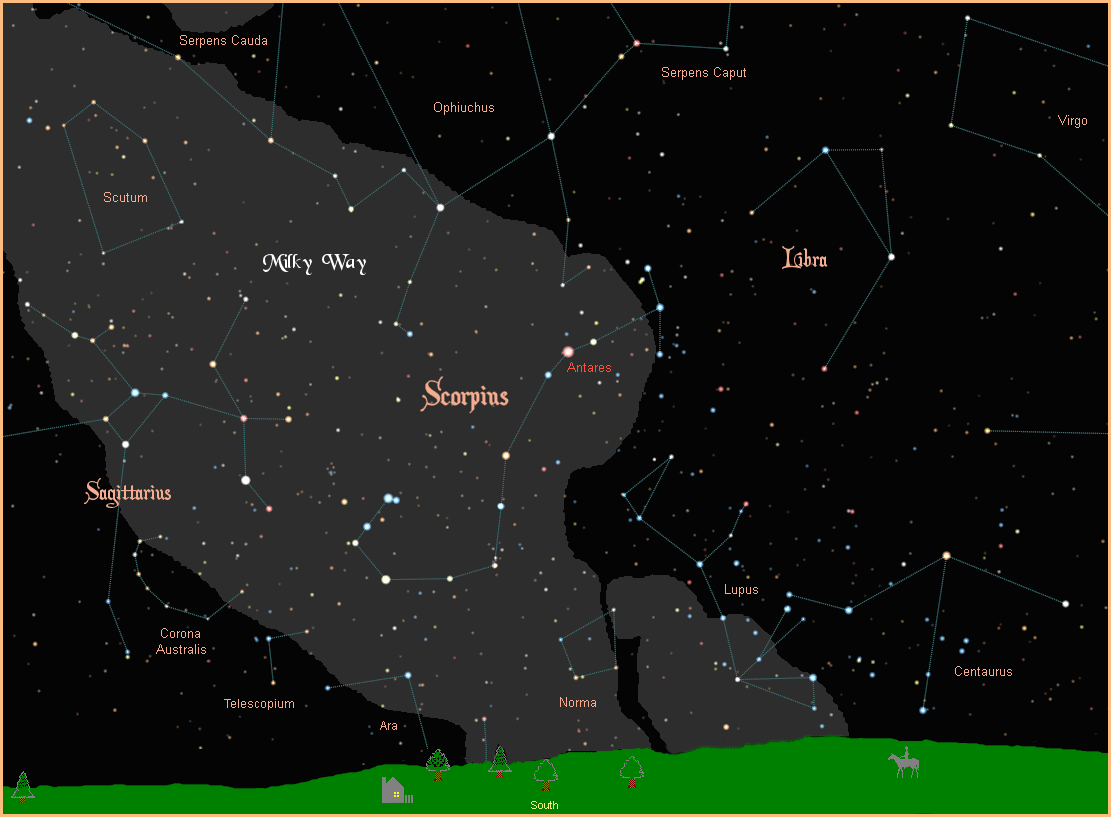
Alpha Scorpii is the brightest star in Scorpius, named Antares, which is Greek for rival of Mars, due to its bright, sparkling red colour. The Romans referred to the star as "Cor Scorpii", the heart of the scorpion. Antares is an enormous M1I red supergiant with a diameter 700 times larger than our Sun. Even though it is far away at a distance of 520 light years, it shines with a first magnitude brilliance of 0.92, making it the fifteenth brightest star in the sky.
Beta Scorpii is named Graffias, from the ancient Greek for crab, with which scorpions were closely associated. Graffias is a complex six star system of binaries within binaries, dominated by a pair of hot blue stars resolvable in a small telescope. The binary pair take about 16,000 years to orbit each other, consisting of a B0 blue main sequence star (Beta-1), and a slightly cooler and dimmer B2 blue main sequence star (Beta-2). Together they shine with a magnitude of 2.54, from a distance of about 400 light years.
Don't try looking for Gamma Scorpii on your star chart because it's not there. Look instead for Sigma Librae (Brachium), and you will find the star Johann Bayer thought deserved to remain in Scorpius as an homage at least, to the figure's original, much larger form. Alas, others disagreed and ultimately prevailed, making the star an official member of the constellation Libra.
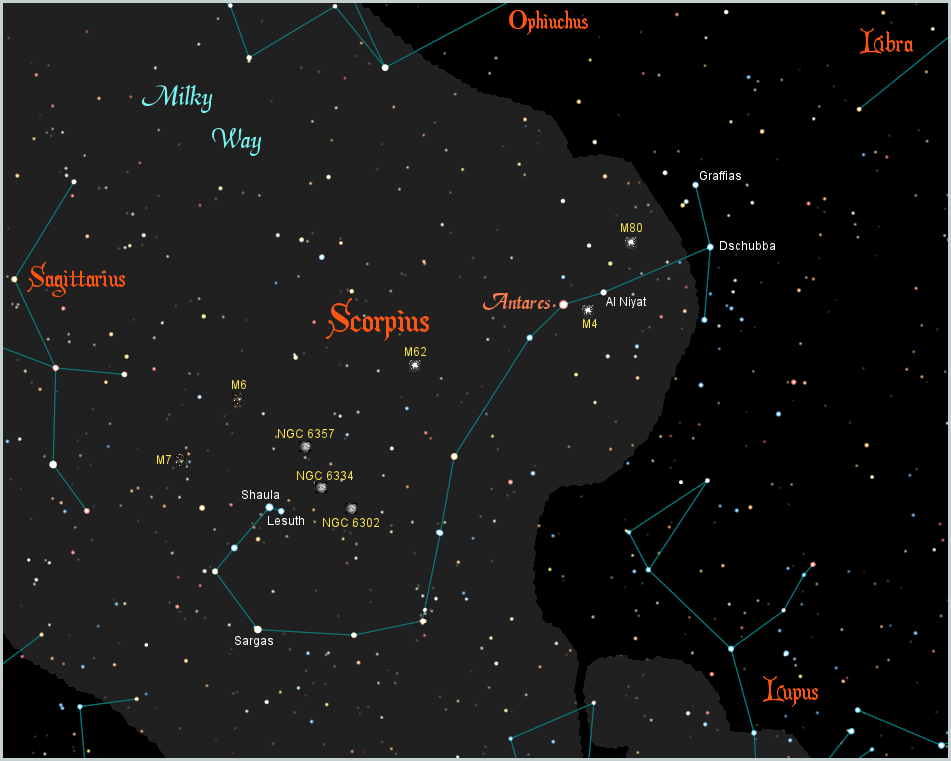
Delta Scorpii is Dschubba, from the Arabic for forehead. It is a hot young B0V blue main sequence star about 400 light years away with three dim gravitationally bound companion stars, making it a four star system. One of these companions is in a highly elliptical orbit that comes close to the bright primary star every eleven years, causing it to dramatically increase in magnitude from 2.29 to 1.59, and transform into a BE star, where the "E" stands for "Emission" lines of Hydrogen in the star's spectrum. This supposes the close pass of the companion star draws material from the larger star that forms a disc around it, and accounts for its variability and its emission lines.
Theta Scorpii is the bright star Sargas, an ancient Babylonian name of unknown origins, leading to its alternate name of Girtab, an ancient Sumarian name for scorpion.. It is an F1III yellow/white giant with a magnitude of 1.86, about 270 light years away.
Lambda Scorpii is the star Shaula, from the Arabic for sting. At magnitude 1.62 it is the second brightest star in the constellation. It is a B1V blue main sequence star with two dim companions, about 570 light years away.
The second and dimmer of the scorpion's two stinger stars is Lesath, from another Arabic word for sting. It is a B2V blue main sequence star with a magnitude of 2.71, at a distance of 540 light years.
Sigma Scorpii is Al Niyat, which means the shield of the heart, as it precedes the scorpion's heart (Antares) across the sky. It is a four star system, the primary visual components being an O9 blue main sequence star and a B2 blue giant in a very close 33 day orbit. The two very hot stars combine for a magnitude of 2.86, from about 700 light years away. Tau Scorpii, on the other side of Antares, is also sometimes referred to as Al Niyat, supposedly as a rear shield for the heart. It is a B0 blue main sequence star with a magnitude of 2.82, about 470 light years away.
Nu Scorpii has the name of Jabbah, from the Arabic for front. It is a multiple star system consisting of at least five stars, all B class blue main sequence stars with a combined magnitude of 4.00, about 470 light years away.
So far there are 24 stars in Scorpius that have been found to support planetary systems, the most exciting of these being the very close, naked eye star, Gliese 667. Its magnitude of 5.91 puts it just within visual reach, and it is only 22.17 light years away. Gliese 667 is a triple star system, and it is the smallest and dimmest of the three, Gliese 667-C that has been found to support a multiple planetary system. It is an M1V red main sequence star, about half the size of our Sun, and about half as hot at 3,700 degrees K. It has two confirmed planets with indications of more. Perhaps the most exciting aspect is that both the confirmed planets are super earths, with one of these, about four times the size of our planet, orbiting inside the habitable zone, where liquid water is possible. Inhabitants of this world would see two suns in their sky, as illustrated in the ESO artwork below.

There is a second naked eye star with a planet, HD 147513, a G5V yellow main sequence star, very much like our Sun, with a magnitude of 5.39. It is also quite close as far as stars go, only 41.96 light years away. So far one gas giant planet just slightly larger than Jupiter has been discovered around this star.
OGLE 2005-BLG-390L is a very distant star with a planet discovered through a technique known as gravitational microlensing, first proposed by Albert Einstein, where the gravity of a close star acts as a lens to magnify the light of a much more distant star. In this case the microlensing technique magnified its light to such a degree it was possible to detect the minute fluctuations caused by a closely orbiting solid, rocky planet only five times the size of Earth. The system is very far away, at a distance of 20,000 light years. For more information on these and other extrasolar planets, visit NASA's New Worlds Atlas, and The Open Exoplanets Catalogue.
Since most of the constellation lies within the rich star fields of the Milky way, Scorpius is a very busy place, full of star clusters and nebulae, including four Messier objects. M4 (NGC 6121) is a bright globular cluster with a magnitude of 5.4, making it easy to find in a backyard telescope. At a distance of 7,200 light years, it is the closest known globular cluster in our galaxy. The Hubble Space Telescope looked deep into the interior of M4, and found white dwarf stars that were determined to be 13 billion years old. These are the oldest stars so far discovered, and since it would have taken at least a billion years for the first stars to form after the big bang, this discovery confirms the age of the Universe to be at least 14 billion years.
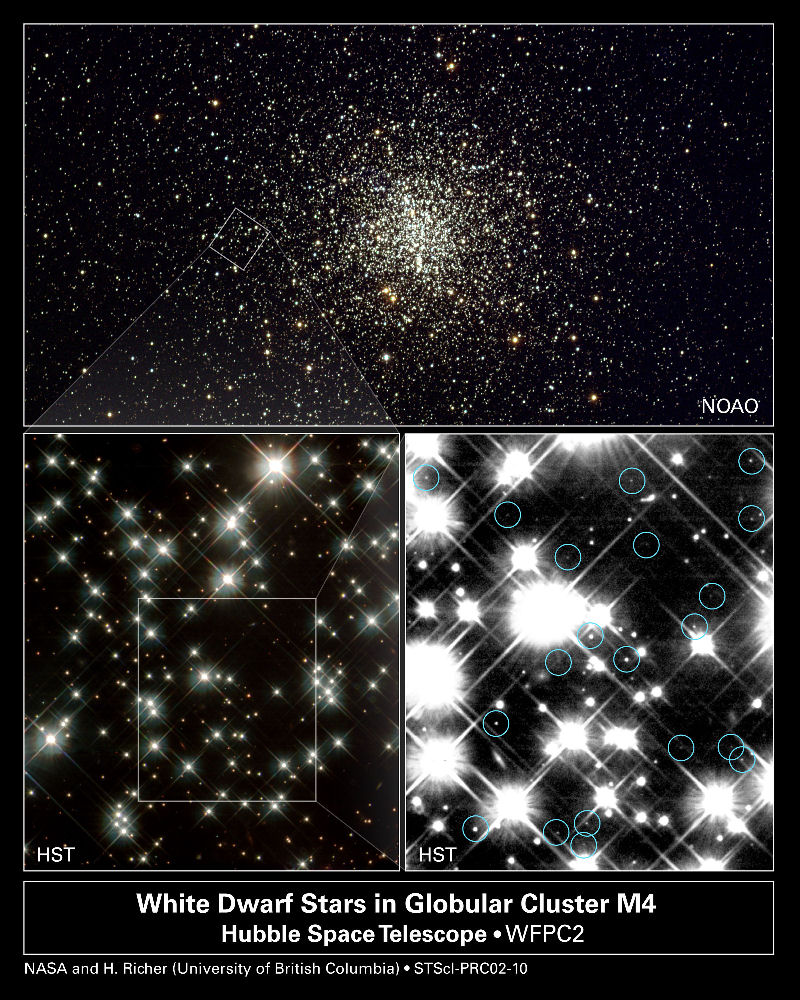
At a distance of about 1,600 light years, open star cluster M6 shines at magnitude 4.2, its stars suggesting the shape of a butterfly. It is estimated to contain about 80 stars, mostly hot young, blue stars, with one quite noticeable yellow/orange giant in their midst.
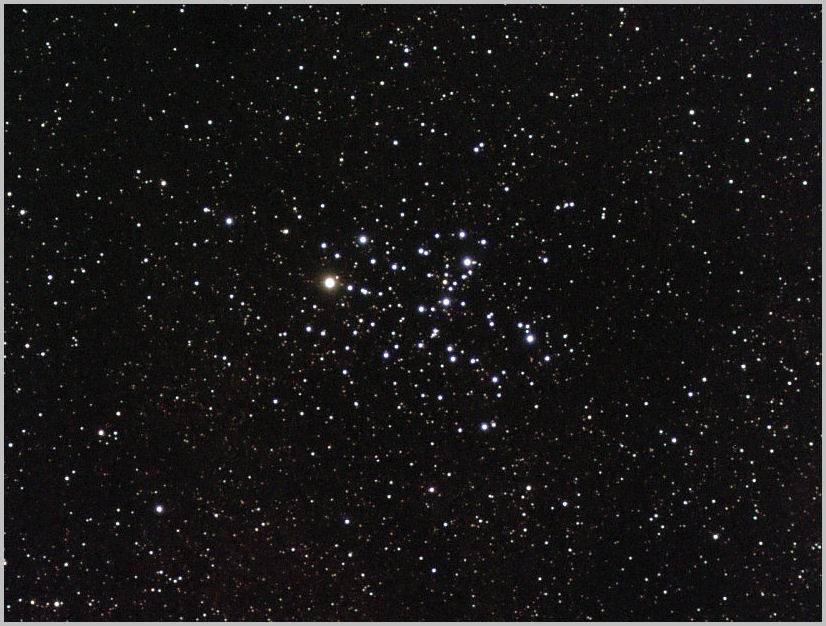
First recorded by Ptolemy in 145 AD, who noted it as a "nebula following the sting of Scorpius," open star cluster M7 shines at magnitude 3.3. Like its neighbour, M6, the cluster contains about 80 stars, although significantly closer at about 900 light years.
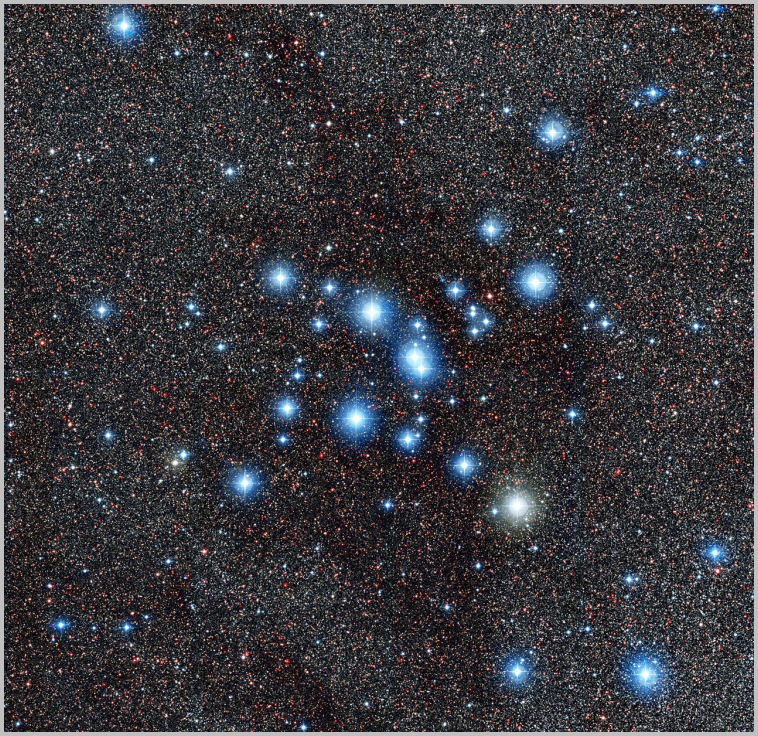
M80 (NGC 6093) is one of the densest of the 200 or so globular star clusters surrounding our galaxy. It is 28,000 light years away and contains hundreds of thousands of stars. With a magnitude of 7.3, it is another good target for a small telescope.
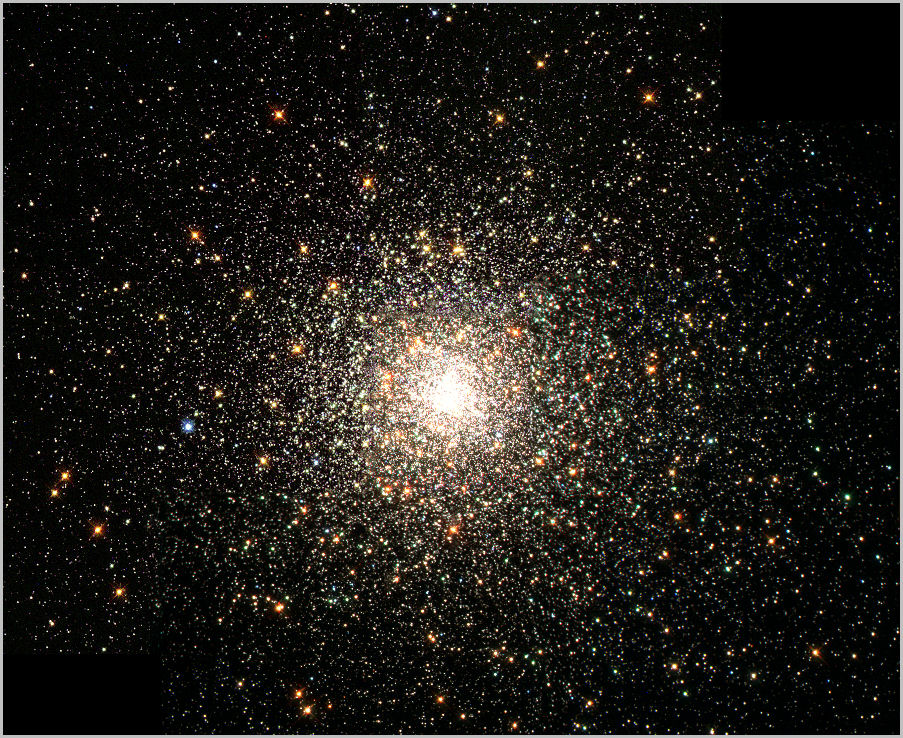
NGC 6302 is known as The Butterfly Nebula. At the heart of this nebula is the remnant of a star about five times the size of our Sun, hidden behind its own emissions. When its supply of fuel ran out, the star grew to a red giant and started shedding its outer layers. The nebula is about two light years across, and about 3,800 light years away, with a magnitude of 12.8.
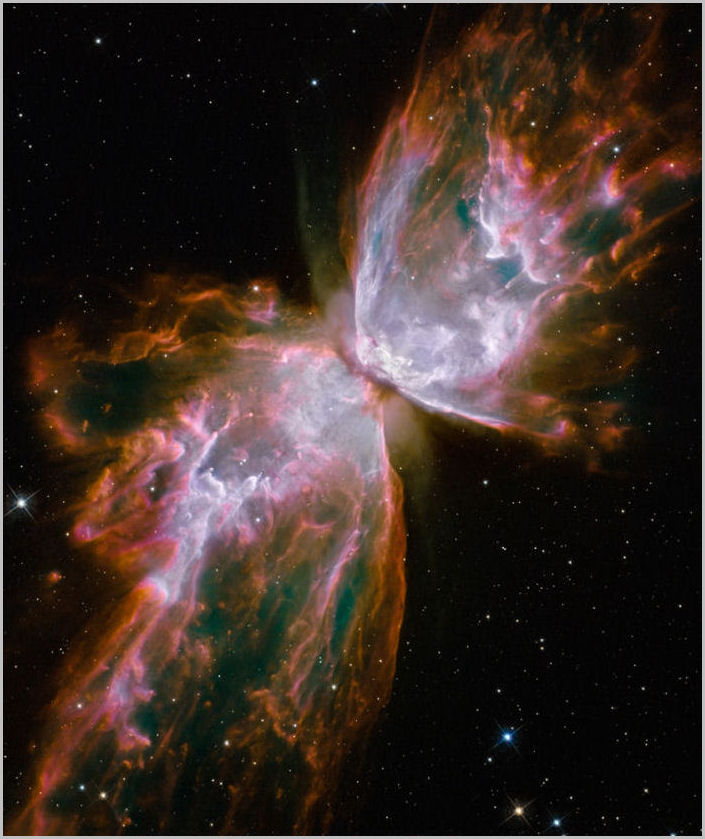
Another of the many nebulae in Scorpius is NGC 6334, known as The Cat's Paw Nebula. Looking like a giant paw print in the sky, it is a vast cloud of mostly hydrogen gas (accounting for its red color) 50 light years across, where stars are being born. It is 5,500 light years away.
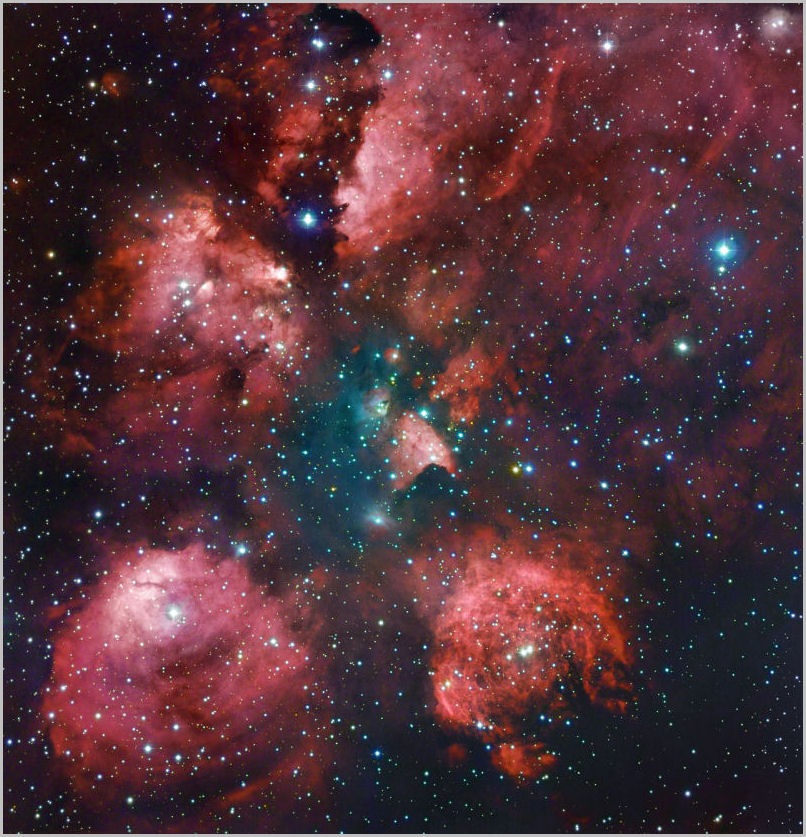
NGC 6357 is yet another faint nebula where stars are being born. It is 8,000 light years away, and contains the small open star cluster Pismis 24.
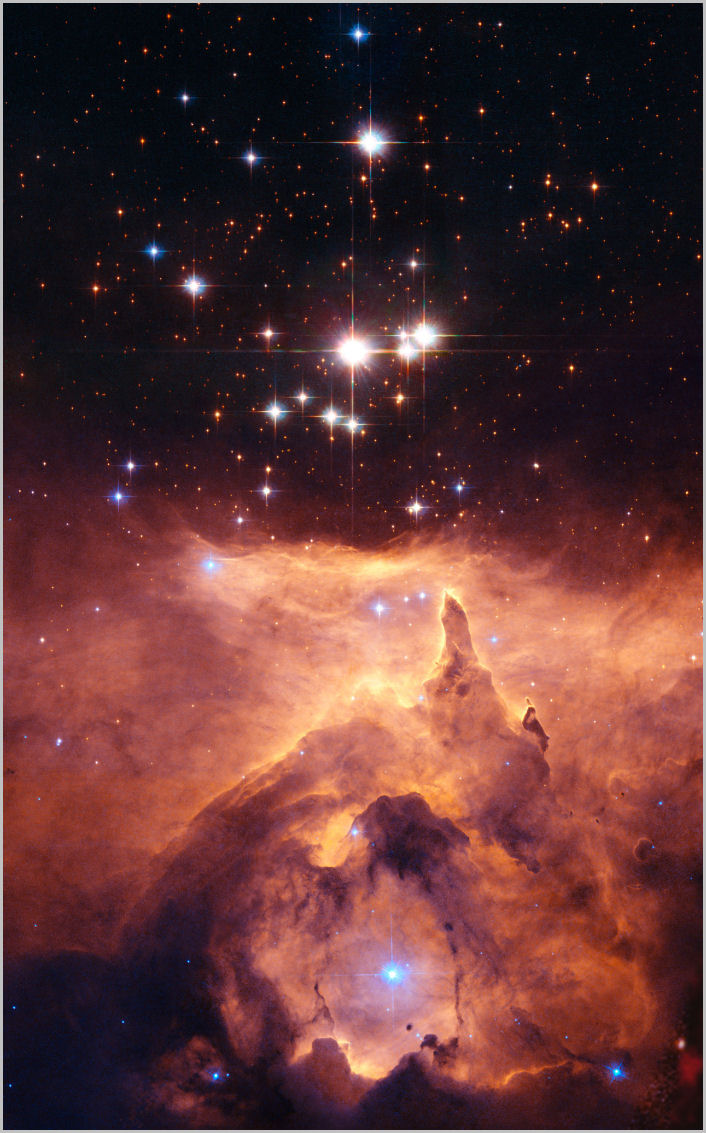
|
|
|
|
|
|